-
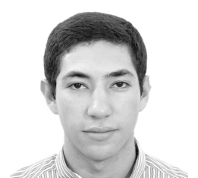
Dr Abderrahim Halimi
-
Dr Abderrahim Halimi
Abderrahim Halimi received the Eng. degree in electronics from the École Nationale Polytechnique (National Polytechnic School of Algiers), Algeria, in 2009, and both the M.Sc. and Ph.D. degrees in signal processing from the Institut National Polytechnique de Toulouse, Toulouse, France, in 2010 and 2013, respectively. From October 2013 to September 2015, he was a Post‑Doctoral Research Associate with the University of Toulouse and the University of Technology of Troyes, France, under the support of the HYPANEMA ANR Project.
From 2015 to 2018, he was a Post‑Doctoral Research Associate within the Single‑Photon Group of the Institute of Photonics and Quantum Sciences at Heriot‑Watt University. Since May 2018, he has been an Assistant Professor within the School of Engineering and Physical Sciences in Heriot‑Watt University.
His research activities focus on statistical signal and image processing, with a particular interest in Bayesian inverse problems with applications to hyperspectral imaging, satellite altimetry and single‑photon depth imaging. He is a member of the Institute of Electrical and Electronics Engineers (IEEE), IEEE Geoscience and Remote Sensing Society and IEEE Signal Processing Society.
-
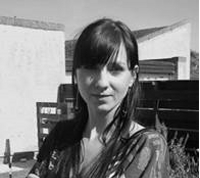
Dr Agata Pawlikowska
-
Dr Agata Pawlikowska
Agata Pawlikowska graduated from the Wroclaw University of Technology in Poland with a BSc in Physics in 2005 and from Imperial College London with an MSc in Optics and Photonics working on holographic optical trapping. Between 2008 and 2010 she worked in industry on the design of a minature camera.
In 2011, Agata started an EngD with the Single‑Photon Group and Selex Galileo (now renamed as Leonardo) studying 3D imaging and LIDAR under the supervision of Professor Gerald S. Buller. She completed this in 2016 and took up a fulltime position with Leonardo.
In her spare time, Agata enjoyed yoga, dance and making ceramics.
-

Mr Colin S. Parry
-
Mr Colin S. Parry
Colin Samuel Parry was born in Stirling, Scotland in 1986. He graduated from the University of Strathclyde (Glasgow, Scotland) with a BSc (Hons) in Applied Physics in 2007.
After his graduation, Colin decided he wished to continue working in the field of physics and accepted a PhD position at Heriot‑Watt University in Quantum Key Distribution (QKD) under the supervision of Professor Gerald S. Buller and following on from previous work by Dr Robert J. Collins. He left the group in 2008 for personal reasons.
In his spare time, Colin was club secretary for local Stirling Albion supporters team, Beechwood Albion, for whom he played in goals. He also enjoyed badminton and reading historical fiction.
-
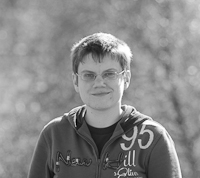
Dr Frauke Izdebski
-
Dr Frauke Izdebski
Dr Frauke Izdebski was born in Duesseldorf, Germany in 1983. She graduated from the University of Applied Sciences Oldenburg/Ostfriesland/Wilhelmshaven (FH‑OOW) in Emden (Germany) with a Dipl.‑Ing. (FH) in Photonics in August 2008 and in 2009 with a Postgraduate Diploma in Photonics and Optoelectronic Devices from the University of St. Andrews and Heriot‑Watt University.
In 2009, Frauke started a PhD with the Single‑Photon Group studying quantum imaging, under the supervision of Professor Gerald S. Buller, which she completed in 2013.
In her spare time, Frauke enjoys hiking and music.
-

Dr Giuseppe Intermite
-
Dr Giuseppe Intermite
Dr Giuseppe Intermite was born in Reggio Calabria, Italy in 1983.
He graduated from The University "Mediterranea" of Reggio Calabria (Italy) in 2006 with a BSc and in 2009 with an MSc in Electronic Engineering.
In 2011, Giuseppe started a PhD with the Single‑Photon Group studying near infrared photon‑counting using Ge‑on‑Si heterostructures under the supervision of Professor Gerald S. Buller completing it in 2015.
In his spare time, Giuseppe enjoys fishing, hiking, reading and music.
-

Dr Karen J. Gordon
-
Dr Karen J. Gordon
Dr Karen Jane Gordon was born in Baillieston (near Glasgow) Scotland in 1976. She graduated with BSc (Hons) in Applied Physics with Computing from Napier University Edinburgh in 1998, MSc in Optoelectronics and Laser Devices from the Unversity of St Andrews in 2000, and the PhD in Physics from Heriot‑Watt University under the supervision of Professor Gerald S. Buller in 2004.
From 2003 to 2007 she undertook a Post‑Doctoral position at Heriot‑Watt University continuing her PhD work on Quantum Key Distribution (QKD). Since 2007 Karen has worked for Selex ES (now renamed as Leonardo) in Edinburgh.
Dr Gordon’s research interests while working with the Single‑Photon Group included quantum key distribution, single‑photon detection and quantum dots as single photon emitters.
-

Dr Nathan R. Gemmell
-
Dr Nathan R. Gemmell
Dr Nathan R. Gemmell graduated from the University of Surrey, England, in 2004 with a BSc in Physics with Nuclear Astrophysics. After five years working in the industrial sector, he returned to Surrey to complete an MSc in Radiation Detection and Instrumentation.
In 2011 Nathan started a PhD under the supervision of Professor Gerald S. Buller and Professor Robert H. Hadfield studying superconducting nanowire single photon detectors, and their applications including biophotonics, ranging, depth profiling and imaging. He completed this in 2015.
In his spare time Nathan enjoys films, reading, and music.
-
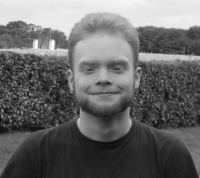
Dr Nils J. Krichel
-
Dr Nils J. Krichel
Nils J. Krichel was born in Erkelenz, Germany in 1985 and lived in Cologne until he began his studies on Physics at RWTH Aachen University in 2004. During an exchange term at Heriot‑Watt University (Edinburgh, Scotland) in 2007, he worked on the group’s time‑of‑flight laser ranging projects, following the work of Dr Ross D. Harkins.
Nils graduated with a MSc with Distinction in Photonics and Optoelectronic Devices from the University of St Andrews and Heriot‑Watt University in 2008. In September 2008, he started a PhD under the supervision of Professor Gerald S. Buller, continuing his work on time‑of‑flight laser ranging within the group, following the work of Dr Aongus McCarthy and Dr Robert J. Collins.
He is a member of the Institute of Physics (IoP), German Physical Society (DPG) and SPIE. Since 2011 Nils has worked for Helia Photonics in Livingston, Scotland.
In his spare time, Nils enjoys rock climbing, cycling and hillwalking.
-

Dr Patrick J. Clarke
-
Dr Patrick J. Clarke
Dr Patrick J. Clarke graduated from The National University of Ireland, Galway in 2006 with a BSc in Physics and Astronomy, from The University of Limerick in 2007 with a Postgraduate Diploma in Industrial Physics and in 2008 from St Andrews University with an MSc in Photonics and Optoelectronic Devices.
In 2008, Patrick started a PhD with the Single‑Photon Group at Heriot‑Watt University studying quantum key distribution, following the previous work undertaken by Dr Robert J. Collins. He left the group in 2013 after grduating with a PhD in Physics to work at BeiHang University.
In his spare time, Patrick enjoys Gaelic football, hurling, reading, swimming, cycling and music.
-

Dr Philip A. Hiskett
-
Dr Philip A. Hiskett
Dr Philip A. Hiskett was born in Southport, England. He graduated with a B.Sc.(Hons) in Physics from the University of Leeds (England) in 1994; an M.Sc. in Optoelectronic and Laser Devices from Heriot‑Watt University (Scotland) in 1996 and a Ph.D. in Physics from Heriot‑Watt University in 2000. His Ph.D. supervisors were Professor Gerald S. Buller (at Heriot‑Watt) and Professor Paul D. Townsend (then at BT). His thesis was entitled "An investigation into the photon‑counting performance of InGaAs/InP separate absorption, grading and multiplication avalanche photodiodes at a wavelength of 1.55µm". In 2000, Phil was awarded the MacFarlane Prize for Best Ph.D. Thesis in Heriot‑Watt University for the year 2000.
From 2000 to 2002, Phil was a research associate in the Single‑Photon Group at Heriot‑Watt University during which time he worked on:
- An investigation into of the photon‑counting performance of novel semiconductor devices fabricated from AlGaAs/GaAs,
- An investigation into the photon‑counting performance of novel semiconductor devices fabricated from Si/SiGe,
- The construction and testing of a long wavelength (1550nm) quantum key distribution receiver,
- The construction and testing of multiple‑wavelength time‑of‑flight sensor.
In 2002, he joined the quantum key distribution team at Los Alamos National Laboratory (LANL), USA where he worked primarily on the design, construction and testing of two fibre‑optic‑based quantum key distribution systems. He also contributed to the software development of one of these systems. In 2007, he returned to the Single‑Photon Group at Heriot‑Watt University to work on a quantum key distribution system operating at gigahertz clock rates at a wavelength of 850nm. In 2008 he left the group to join Selex ES (now renamed as Leonardo).
Phil’s research interests include optoelectronic devices, detector design, free‑space optics (design and construction), quantum key distribution, photon‑counting and he has considerable experience in software development in C/C++ and LabView programming languages.
Phil’s outside interests include photography and travelling.
-

Dr Ross D. Harkins
-
Dr Ross D. Harkins
Dr Ross D. Harkins was born in Newtownards, Northern Ireland in 1978. He graduated with Mphys (Hons) Physics from Heriot‑Watt University in 2001 and a PhD from the same institution in 2005. He then left the group to work in industry.
Ross’s spare time activities included training for the British and Four Nations Powerlifting Championships, reading, films, travel, eating out and socialising
-

Dr Ryan E. Warburton
-
Dr Ryan E. Warburton
Dr Ryan Ellis Warburton was born in Liverpool, England, on the 17th May 1982. During his childhood Ryan also lived in France before settling in Moffat in Dumfries and Galloway where he lived until he started at Heriot‑Watt University in September 2000.
In 2008, Ryan completed a PhD under the supervision of Prof Gerald S. Buller in InGaAs/InP Infra‑Red Single‑Photon Avalanche Diodes (SPADS) and graduated in 2009. Additionally, Ryan worked with the Optics Group at the University of Glasgow and also with Strathclyde University on a joint project "Full field coherent quantum‑imaging". This project exploited the use of spontaneous parametric down‑conversion to create entangled photons for use in quantum imaging applications as well as more established experimental violations of the EPR paradox. In 2015 Ryan joined the Experimental Quantum Optics group.
In his spare time, Ryan enjoys mountain biking, music (listening, production and DJing) and photography.
-

Dr Sara Pellegrini
-
Dr Sara Pellegrini
Sara Pellegrini was born in Bergamo, Italy in 1972. She graduated with full grades in Microelectronics Engineering at Politecnico di Milano in 1998 and in 2006 she completed a PhD in Physics at Heriot‑Watt University under the supervision of Professor Gerald S. Buller.
Sara worked on the Time‑of‑Flight project at Heriot‑Watt University for a full year before finishing her studies in Italy. She then started working on the design, fabrication and characterisation of InGaAs/InP Infra‑Red Single‑Photon Avalanche Diodes (SPADS) for single photon detection at 1.55µm wavelength. She was also involved in time‑resolved photoluminescence measurements on quantum wells and quantum dots employing SPADs. In 2007 she left the group to join STMicroelectronics.
During the first 3 years of her PhD Sara was assistant co‑ordinator of the successful European funded project EQUIS.
-
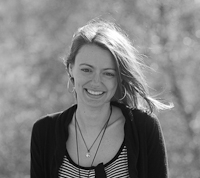
Dr Silvia Butera
-
Dr Silvia Butera
Dr Silvia Butera was born in Palermo, Italy in 1983.
She graduated in 2006 with a BSc in Physics and in 2009 with MSc in Material Physics from the University of Palermo in Italy.
In 2010, Silvia started a PhD with the Single‑Photon Group studying infrared photon‑counting using single‑photon avalanche diode detectors under the supervision of Professor Gerald S. Buller. She completed this in 2015.
In her spare time, Silvia enjoys going to the gym, reading and music.
-
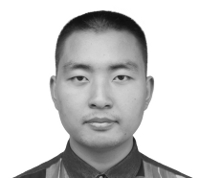
Mr Songmao Chen
-
Mr Songmao Chen
Songmao Chen is from Xi'an, China. He received his Bachelor degree of Engineering, with a major in Artificial Intelligence and Technology, from XiDian University in 2014. Then, in the same year, he began to study at the Chinese Academy of Science as a postgraduate. From 2016, he has been working towards a PhD at the Chinese Academy of Science while also working as a research associate at Heriot‑Watt University on single‑photon imaging.
Songmao has experience in signal and information processing, including image recovery. His expertise covers image deblurring, image quality assessment, image reconstruction, and advanced algorithms. Now he is focusing on single‑photon image processing.
While at the Chinese Academy of Science, he was a student welfare officer in the Xi'an Institute of Optics and Precision Mechanics and sought to ensure a welcoming environment for students within the structures of the university.
Outside of work, his interests include hiking, travelling, music, history, and calligraphy.
-

Dr Veronica Fernandez
-
Dr Veronica Fernandez
Veronica Fernandez was born in Barcelona, Spain, in 1977. She received a BSc. with honours (5 years) degree in physics with electronics from the University of Seville, Spain, in June 2002.
In July 2006 she graduated with a PhD in physics under the supervision of Professor Gerald S. Buller at Heriot‑Watt University and then spent one year continuing her work in quantum key distribution at gigahertz clock rates, following the previous work done by Dr. Karen J. Gordon before joining Consejo Superior de Investigaciones Científicas (CSIC) in Spain.
-
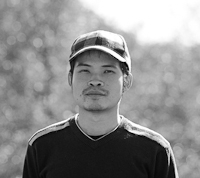
Dr Ximing Ren
-
Dr Ximing Ren
Dr Ximing Ren was born in Guangdong, mainland China in 1985.
He graduated in 2008 with a B.Eng. in Optical Information Engineering from Beijing Institute of Technology, China and in 2011 from Beihang University, China with M.Eng. in Electronics Science and Technology.
In 2011, Ximing started a PhD with a prize scholarship from the Scottish Universities Physics Alliance (SUPA) with the Single‑Photon Group studying time‑of‑flight laser‑ranging under the supervision of Professor Gerald S. Buller. He graduated in November 2015.
-

Dr Robert J. Collins
-
Dr Robert J. Collins
Robert John Collins was born in Edinburgh, Scotland in 1981. He graduated from Heriot‑Watt University (Edinburgh) with a MPhys (Hons) in Physics in July 2003. After a year spent working in the commercial sector, Robert completed a PhD at Heriot‑Watt University in July 2008 under the supervision of Prof Gerald S. Buller.
Robert is a Research Associate currently working on experimental implementations of quantum information protocols. He has previously worked on depth imaging, with Dr Aongus McCarthy, and single‑photon sources. He is a member of the Institute of Physics, the Institute of Electrical and Electronics Engineers (IEEE), the Optical Society of America (OSA) and SPIE.
In his spare time, Robert enjoys badminton, swimming, hill walking and photography.
-

Dr Peter Vines
-
Dr Peter Vines
Peter Vines grew up in Dorset in the south of England. He graduated with a BEng in Electronic Engineering from the University of Sheffield in 2005 and went on to complete a PhD in Electronic and Electrical Engineering from the same university in 2011. His PhD focussed on IR detection and spectroscopy using Quantum Dot Infrared Photodetectors (QDIP) and low noise InAs avalanche photodiodes (APD).
After completing his degree he continued his detector research in Sheffield working as a Research Associate. In 2012 he joined the Single‑Photon Group at Heriot‑Watt University where is working on infrared single photon counting using Single Photon Avalanche Detectors (SPAD). He is a member of the Institute of Electrical and Electronic Engineers (IEEE) and SPIE.
In his spare time he enjoys rock climbing, hiking and sailing.
-
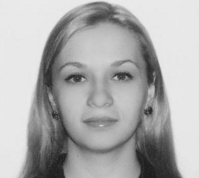
Dr Kateryna Kuzmenko
-
Dr Kateryna Kuzmenko
Kateryna was born in 1989 and grew up in Kholmy, Ukraine. She graduated with a BSc in Applied Physics in 2010 and MSc with honours in Physical Electronics in 2012 from the National Taras Shevchenko University of Kyiv, Ukraine.
Between 2012 and 2015 she worked as an engineer in the scientific and research laboratory of standards and reference materials of optical and physical values at the Scientific and Production Institute of Metrological Provision of Properties Measurement of Substances and Materials of State Enterprise "Ukrmetrteststandard" in Kyiv, Ukraine.
In 2015, she joined the Single‑Photon Group at Heriot‑Watt University working on integrated Ge on Si SPADs on Si platforms under the supervision of Professor Gerald S. Buller. She successfully defended her PhD thesis earning her doctorate in May 2019.
In her spare time Kateryna enjoys reading Sci‑Fi literature, ball dances, movies and music.
-
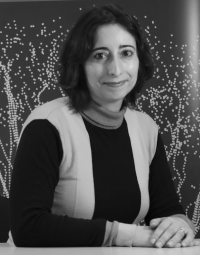
Dr Catarina C. Novo
-
Dr Catarina C. Novo
Dr Catarina Novo is from Aveiro, Portugal and studied Integrated Masters in Chemical Engineering at University of Aveiro. After her graduation, Catarina worked as a researcher (post-masters) at University of Porto on a Chemical Engineering Project regarding the pulp and paper industry and later on at University of Aveiro and Instituto de Telecomunicações (Aveiro), widening the scope of the research embracing optical fibre sensors projects.
In 2014, Catarina moved to Edinburgh to do her PhD within the Applied Optics and Photonics Group, Heriot‑Watt University. The scope of the research was based on microstructured optical fibres and ways to functionalise the fibres to use as optical fibre sensors, using ultrafast laser machining.
In October 2018, Catarina initiated a postdoctoral research associate position in Precision Laser Machining at Heriot‑Watt University and in May 2019 she joined the Single‑Photon Group to work as a Postdoctoral Research Associate in Applied Free‑Space Quantum Communications.
Catarina also enjoys being involved in outreach activities and travelling.
-
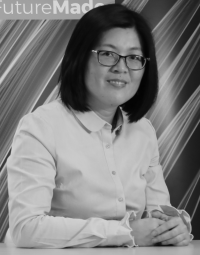
Dr Chunmei Zhang
-
Dr Chunmei Zhang
Chunmei comes from a small village in Shandong, China. Chunmei joined the Single‑Photon Group as a Research Associate in December 2019 to study satellite quantum communications.
She worked for five years as a Research Assistant at the Institute of Optics and Electronics, Chinese Academy of Sciences (CAS), after she obtained her master degree in Optics from the University of Electronic Sciences and Technology of China. During her time at CAS, she got involved in the R&D of the commercial laser confocal biochip scanner and UV mask aligners.
Chunmei earned her Doctorate from the Institute of Photonics and Quantum Sciences, Heriot‑Watt University. Her thesis, Ultrathin Metasurface Devices for Phase and Polarization Control, focused on the development of nanoscale optical devices with unusual functionalities that are difficult or impossible to realize with conventional optical components.
Outside of work she enjoys gardening, music, reading and playing with her cat.
-
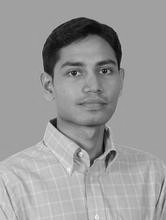
Dr Imad Faruque
-
Dr Imad Faruque
Imad grew up in Dhaka, Bangladesh and has been trained as an Electrical and Electronic Engineer (EEE) during his BSc (2009) from Bangladesh University of Engineering and Technology (BUET). Imad was awarded an Erasmus Mundus scholarship for a 2‑years MSc (2012) in photonic science and engineering. He studied in Universiteit Gent, Vrije Universiteit Brussel, and the University of St Andrews in Europe, focusing his research on integrated photonics. His MSc thesis was "Photon‑pairs generation in photonic crystal optical fibre" under the supervision of Dr F. König (University of St Andrews). During this time, he also travelled far and wide and met people from all over the world.
Imad completed his PhD in Physics (2018) defending his Thesis titled: Developing indistinguishable heralded single‑photon sources in silicon photonics as a Marie Curie Early Stage Researcher in QET Labs (University of Bristol) on silicon quantum photonics, under the supervision of Prof Mark Thompson and Prof John Rarity. During his PhD, Imad investigated high‑performance heralded single‑photon sources in silicon photonics for quantum technologies. As being part of this programme, he has been trained on e‑beam lithography in Sandia National Lab, New Mexico, USA. Afterwards, he was a postdoc in QET Labs until September 2020, and worked on several projects on quantum communications and quantum imaging, in particular, the first demonstration of chip‑to‑chip quantum teleportation.
Imad joined the Single‑Photon Group as a Postdoctoral Research Associate in October 2020 to work on quantum communications.
Imad enjoys and has been part of many outreach activities on quantum technologies and general science. He is involved in the OSA Traveling Lecturer program. Imad likes a good story (book/movie/theatre), travelling and playing games with his colleagues and friends.
-
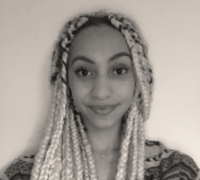
Dr Zoë M. Greener
-
Ms Zoë M. Greener
Zoë M. Greener was born in 1995 and grew up in Hampshire. She moved to Edinburgh in 2013 and completed her undergraduate degree at Heriot‑Watt University receiving an MPhys (Hons) in June 2018.
In September 2018 she joined the Single‑Photon Group at Heriot‑Watt University, studying single‑photon and quantum enhanced imaging. She is also collaborating with Dr Kateryna Kuzmenko on integrated Ge on Si SPADs on Si platforms.
During her free time she enjoy playing hockey, dancing, skiing, and anything outdoorsy.
-
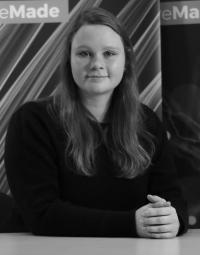
Ms Laura L. Huddleston
-
Ms Laura L. Huddleston
Laura L. Huddleston was born in 1995 and grew up in Atlanta, USA. She graduated with a bachelor degree in electrical engineering from the Georgia Institute of Technology in 2017. Winning the Bobby Jones Fellowship, she moved to Scotland for an MSc in Photonics and Optoelectronic Devices, a joint program between the University of St. Andrews and the Georgia Institute of Technology.
In October 2019, she joined the Single‑Photon Group at Heriot‑Watt University, studying integrated Ge‑on‑Si SPADs on Si platforms under the supervision of Prof. Gerald S. Buller.
During her free time she enjoys a nice cupa tea while cooking, reading, and exploring castles.
-
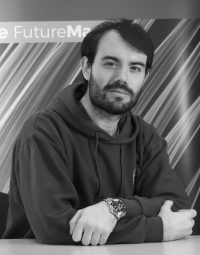
Dr Ugo Zanforlin
-
Dr Ugo Zanforlin
Ugo Zanforlin was born in Abano Terme (Italy) in 1989. He graduated from the Università degli studi di Padova with a MSc (Hons) in Physics in 2015.
In June 2016 Ugo joined the Single‑Photon Group at Heriot‑Watt University working on quantum digital signatures, quantum amplifiers and random numbers generation under the supervision of Prof. Gerald S. Buller in collaboration with Dr Ross J. Donaldson, Dr Robert J. Collins and Mr David W. Canning. He has been a member of the Optical Society of America (OSA) since 2016 and covered the role of officer for the Heriot‑Watt OSA student chapter in 2017. Ugo obtained his Doctorate in July 2020 and continued working as a Postdoctoral Researcher on quantum communications. Ugo has then joined the Quantum Technologies Unit of the Leonardo Labs in Rome (Italy) as a Research Fellow.
In his spare time Ugo enjoys playing the piano, mountain biking, reading, cooking and gaming.
-
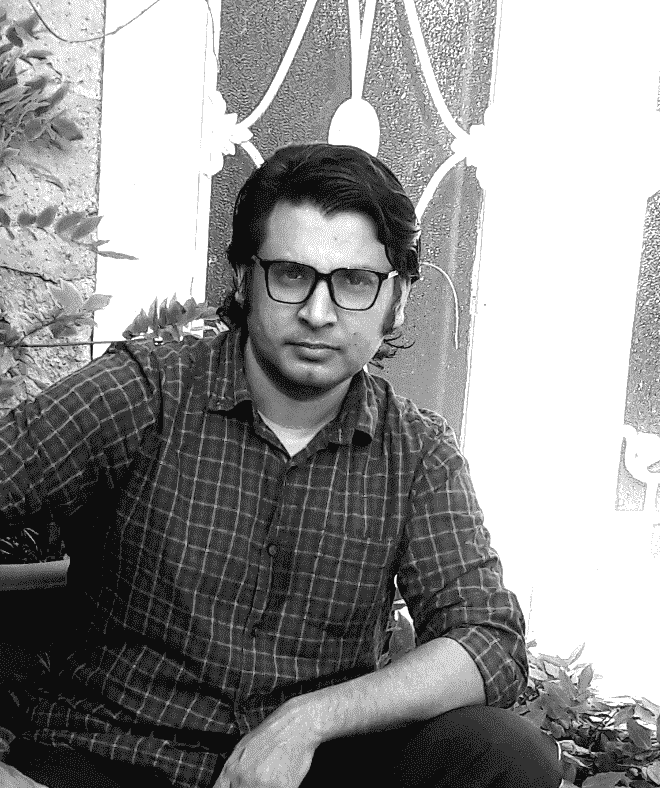
Dr Zubair Ahmed
-
Dr Zubair Ahmed
Zubair grew up in Nawabshah, Pakistan, where he completed his undergraduate education in Electronics Engineering at the Quaid‑e‑Awam University of Engineering Science (QUEST) in 2009. His master's degree is also in Electronics Engineering, completed from Linköping University, Sweden in 2013 with specialisation in the design of CMOS-based analogue, digital, and RF integrated circuits and system‑on‑chip in advanced semiconductor technologies.
After his master's studies, Zubair worked as a lecturer in Pakistan and taught electronics to undergraduate students for almost four years. In 2017, he enrolled as a PhD student in the communications research group at the University of Oxford, England, to conduct research on arrays of single‑photon detectors for developing a sensitive receiver for optical wireless communications. During his PhD research, he investigated methods of experiments to effectively characterise an array of single‑photon detectors for its various parameters, such as photon detection efficiency, detected count rate, and linearity in different operating conditions. In addition to characterisation, Zubair also evaluated and compared the performance of a range of detectors as sensitive optical receivers and developed analytical models to predict the performance of single‑photon detector arrays accurately.
Following his PhD studies, Zubair joined the Single‑Photon Group at Heriot‑Watt University as Research Associate in January 2022, investigating the application of single-photon detection technology for imaging. In particular, he investigated a state‑of‑the‑art array of single‑photon detectors built on CMOS technology, which incorporates a time‑to‑digital converter (TDC) integrated into every pixel for time‑resolved single‑photon counting to demonstrate high‑resolution 3D imaging through the challenging underwater environments.
Zubair's research interests are imaging through scattering media, non‑line‑of‑sight (NLOS) optical wireless communications in free space and underwater, and quantum applications using single‑photon detection technology .
-
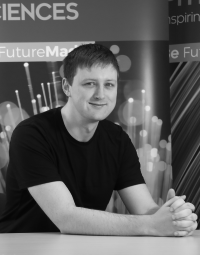
Dr David W. Canning
-
Dr David W. Canning
Contact info:
email: dwc1[anti-spam](at)[remove]hw.ac.uk
Telephone: +44 (0)131 451 4687
Fax: +44 (0)131 451 3136David W. Canning was born in Glasgow, Scotland, in 1989. Having gained an undergraduate degree in theoretical physics from the University of St. Andrews in 2013, he went on to work for Hewlett‑Packard Enterprise Services (now DXC Technology) as a systems programmer. He moved on from this position in order to gain a more rounded education in computer science via postgraduate study in high performance computing at the University of Edinburgh.
David has worked towards a PhD under the supervision of Prof Gerald S. Buller with the support of a scholarship from the UK Quantum Technology Hub for Quantum Communications Technologies. During this time, he has worked on experimental realizations of quantum amplifiers, quantum digital signatures, and free‑space quantum key distribution.
Besides work, David enjoys playing drums and percussion, playing and watching football, and running.
-

Mr Louis Ferreira
-
Mr Louis Ferreira
Louis Ferreira was born in France in 1992. He oscillated between French and Scottish schools until leaving in 2010. Unsure of what to study at university, he worked in various sectors until 2017, where he began a HND in electronic and electrical engineering as an associate student with Heriot-watt. The idea was to continue the BSc at Heriot-Watt if he liked it. After the HND, he found himself preferring to study a BSc in physics and decided to join the physics program as a 2nd year student.
Louis completed his bachelors in 2022, earned a scholarship from Leonardo to join the Single‑Photon Group at Heriot‑Watt University, under the supervision of Dr Ross Donaldson to work on developing free space optical communications channels as a PhD student.
In his spare time Louis is an avid gamer and health & fitness enthusiast.
-
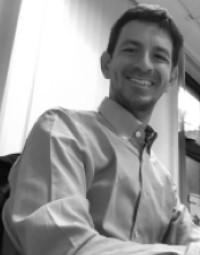
Dr Umberto Nasti
-
Dr Umberto Nasti
Dr Umberto Nasti is from Naples, Italy. He graduated with a BSc in Physics in 2010 and a Master in Materials Physics in 2014 from Università degli studi di Napoli Federico II.
Following his undergraduate degree, he started his PhD in 2015 with the Quantum Sensor Group at Glasgow University under the supervision of Prof Robert H. Hadfield. His research topic was the fabrication and the characterization of array superconducting nanowire single‑photon detectors (SNSPDs) to be applied as a mid‑infrared imaging sensor. During his PhD, he achieved a great experience in the field of thin‑film deposition, micro/nano fabrication, low‑temperature, and optoelectronic measurements. In 2020, he defended his Thesis titled: Emerging materials for superconducting nanowire photon counting arrays.
Umberto is working with the Single‑Photon Group at Heriot‑Watt University in Applied Free‑Space Quantum Communications.
In his spare time, Umberto likes being involved in outreach activities, travelling, swimming, and cooking.
-
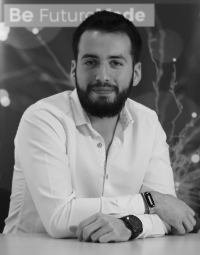
Dr Alfonso Tello Castillo
-
Dr Alfonso Tello Castillo
Alfonso Tello Castillo was born in Sevilla (Spain) in 1994. He graduated from the Universidad de Sevilla (Spain) with a Bachelor degree in Telecommunication Engineering in 2017 after having spent one year in Czech Republic through the Erasmus program.
In 2017, Alfonso started a two‑years Master in Telecommunication Engineering graduating in 2019. During this time, he was also part of the research staff at Telematics Department at the Universidad de Sevilla. Alfonso then joined the Single‑Photon Group at Heriot‑Watt University working on satellite‑based quantum communications under the supervision of Dr Ross J. Donaldson. On completion of his PhD in September 2022 Alfonso continued in the Single‑Photon Group as a Postdoctoral Researcher where he is now continuing his research in Quantum Communications.
In his spare time Alfonso enjoys playing football and tennis, reading, cooking and brewing beer.
-
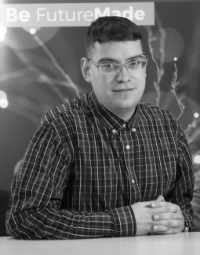
Dr Ulrich Steinlehner
-
Dr Ulrich Steinlehner
Contact info:
email: uks2[anti-spam](at)[remove]hw.ac.uk
Telephone: +44 (0)131 451 4687
Fax: +44 (0)131 451 3136Ulrich was born in Schwaebisch Hall, Germany. In 2013 he successfully completed his apprenticeship as mechatronics technician at MAN Truck & Bus AG (Nuremberg, Germany). Afterwards Ulrich started studying to reinforce and gain further knowledge in mechatronics, graduating with a Bachelor of Engineering in Mechatronics (Major Mechatronic Systems) from Deggendorf Institute of Technology (Germany).
In 2018, after his BEng, Ulrich moved to Edinburgh to study for an MSc in Embedded Systems Engineering at Heriot‑Watt University. Following his Graduation in December 2019, he joined the Single‑Photon Group at Heriot‑Watt University and will be working on single‑photon underwater imaging under the supervision of Prof. Gerald S. Buller. The fundamentals for his work were researched by Dr Aurora Maccarone, with whom Ulrich will work in close collaboration.
In his spare time, Ulrich immerses himself in nature by walking, traveling with his bicycle or motorbike and likes wrenching on them too. Additionally he enjoys reading, culture and history.
-

Dr Jorge Garcia Armenta
-
Dr Jorge Garcia Armenta
Contact info:
email: j.garcia[anti-spam](at)[remove]hw.ac.uk
Telephone: TBCJorge was born in Culiacán, México. He graduated from the Instituto Tecnológico de Culiacán in 2013 with a bachelor in Electronics Engineering, specialising in digital signal processing. In 2016, he obtained a Master of Science degree in optics from the Optics Research Centre (CIO) at León, México.
After finishing his MSc degree, Jorge won a 4-year scholarship to study a PhD at Loughborough University (England) under the Centre for Doctoral Training in Embedded Intelligence (CDT-EI), sponsored by the companies Epigem, the National Physical Laboratories (NPL) and the Mexican Research Council for Science and Technology (CONACyT). During that time, he developed a compact large‑field of view holographic camera integrated into a synthetic aperture interferometry system for high resolution imaging.
In June 2021, he joined the Single‑Photon Group at the Heriot‑Watt University in Edinburgh as a Research Associate, where he is working with single photon lidar imaging.
In his spare time Jorge enjoys playing the drums, cooking and exploring the outdoors.
-
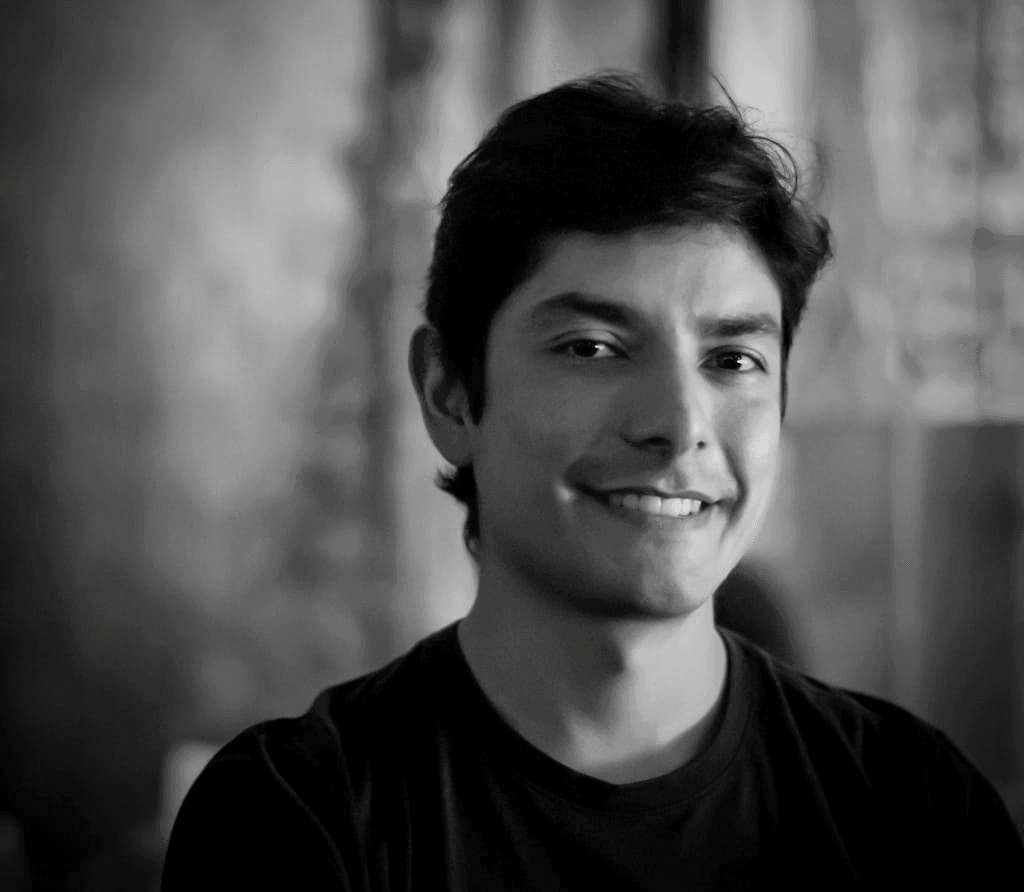
Dr John Pantoja
-
Dr John Pantoja
Contact info:
email: j.pantoja[anti-spam](at)[remove]hw.ac.uk
Telephone: TBCJohn was born in Pasto, Colombia. He received his Bachelor in Electronics Engineering from the Universidad Nacional de Colombia in 2008. After his undergraduate degree, he started the Master and PhD in Engineering at the Universidad de los Andes. He obtained the PhD degree in 2014, where he focussed his research in electromagnetic compatibility analysis of electronic devices with random characteristics, computational electromagnetics, and intentional electromagnetic interference. During his PhD he was a scholarship holder of the Swiss Confederation and of the Colombian Department of Science, Technology and Innovation.
After finalizing his PhD, John has worked in academia and in research centres on different research topics including ground‑penetrating radar, high‑power microwave sources, synthetic aperture radar, and laser‑triggered spark‑gap switches.
In January 2023, he joined the Single‑Photon Group at the Heriot‑Watt University in Edinburgh as a Research Associate, where he is working in Quantum Communications under the supervision of Dr Ross J. Donaldson.
In his spare time John likes swimming, diving, and playing guitar and ethnic musical instruments.
-

Ms Alexandra Lee
-
Ms Alexandra Lee
Contact info:
email: al152[anti-spam](at)[remove]hw.ac.uk
Telephone: TBCAlexandra grew up in the Lake District, UK. In 2015, she graduated from the University of Glasgow with a BSc (Hons) in Physics and after a brief hiatus, graduated with an MSc in Applied Physics from the University of Strathclyde in 2017.
Alexandra worked as an optical engineer for RAL Space for 2 years, working on a range of imaging systems for satellites, before joining Heriot‑Watt University in 2019 under the CDT of Applied Photonics. Primarily based at Wideblue in Glasgow, Alexandra is working towards an EngD under the supervision of Dr Ross Donaldson (HWU) and Dr Craig Whitehill (Wideblue), with research into developing novel optical ground stations for QKD.
-

Dr Elizabeth Eso
-
Dr Elizabeth Eso
Contact info:
email: e.eso[anti-spam](at)[remove]hw.ac.uk
Telephone: TBCElizabeth Eso received her B.Eng (Hons.) in Electrical and Electronics Engineering from the Abubakar Tafawa Balewa University, Nigeria (2011) and MSc in Microelectronics and Communications Engineering from the Northumbria University Newcastle, UK (2014) with Distinction and also carried out her PhD research degree in the same University. Earlier on, in 2004 she won the Best Female Position in Mathematics in Nigeria, awarded by the Mathematical Association of Nigeria.
Elizabeth Eso was a Marie Curie Early Stage Researcher at the Northumbria University Newcastle before she joined the Single‑Photon Group at Heriot‑Watt University in September 2021 as a Research Associate.
Elizabeth's research interests include free‑space optics, quantum key distribution, visible light communications and optical camera communications. She is a member of the Institute of Electrical and Electronics Engineers (IEEE) and the Institution of Engineering and Technology (IET).
-

Dr Yoann Noblet
-
Dr Yoann Noblet
Contact info:
email: y.noblet[anti-spam](at)[remove]hw.ac.uk
Telephone: TBCYoann was born in Caen, France in 1986 and grew up in Cabourg, Normandy.
He graduated with a Higher National Diploma in Photonics from the University of Rennes in 2006. He then moved to Glasgow and graduated with an MSc in Photonics from the University of Strathclyde in 2010. He then decided to start a joint PhD between the University of Strathclyde and Macquarie University (Australia) working on Frequency Modified Feedback in External Cavity Semiconductor Laser Systems.
After completion of his PhD, Yoann started working in industry, focusing on thin-film coatings and automation. In 2018 he came back to the University of Strathclyde as a Research Associate working on the development of a novel and compact multispectral imaging instrument for satellite deployment. In 2021 Yoann joined the Single‑Photon Group at Heriot‑Watt University as a Research Associate to work on free space quantum communications.
In his free time Yoann enjoys playing basketball, skiing, hiking, boardgames and gaming.
-

Dr Pete Connolly
-
Dr Pete Connolly
Contact info:
email: pc23[anti-spam](at)[remove]hw.ac.uk
Telephone: TBC
Fax: TBCPete Connolly grew up in Staffordshire, England, before studying for a degree in Advertising at the University of Northampton, earning a BA (Hons) in 2008. After working in advertising, Peter returned to education and graduated with an MSc (Hons) in Physics from the University of Birmingham in 2016.
In October 2016 he joined the Single‑Photon Group at Heriot‑Watt University working on next generation imaging using sparse single‑photon data under the supervision of Prof. Gerald S. Buller. Pete earned his Doctorate in July 2020 and continued working as a Postdoctoral Researcher with the Single‑Photon Group on the topic of enhanced quantum imaging.
In his spare time Pete plays football, practices taekwondo and enjoys travelling.
-
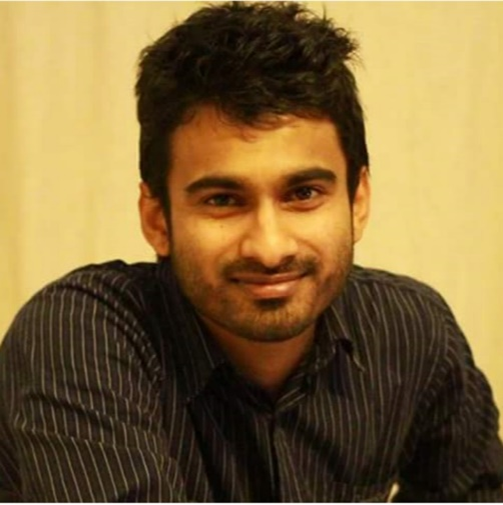
Dr Harikumar K. Chandrasekharan
-
Dr Harikumar K. Chandrasekharan
Contact info:
email: h.kuzhikkattu_chandrasekharan[anti-spam](at)[remove]hw.ac.uk
Telephone: TBCHari received a B.Sc. degree in Physics from Calicut University in 2008 and an M.Sc. degree in Photonics and Biophonics from Madras University in 2011. He finished his PhD at Heriot-Watt University, in the Photonics Instrumentation Group under the guidance of Prof Robert Thomson. His doctoral dissertation entitled "Time-resolved imaging of guided wave phenomena", mainly focused on the use of novel imaging technologies for time-resolved photonic applications. This work investigated the potential application of a novel single-photon sensitive camera for a variety of applications that involves time-stretch photonic imaging, time-resolved discrete optics in photonic lattices, and speciality fibre optics.
After completing Research associate roles in various research groups at HWU, he joined the Single‑Photon Group as a post-doctoral researcher, currently working on implementing efficient optical detection protocols for satellite quantum communication under the supervision of Dr. Ross Donaldson.
-
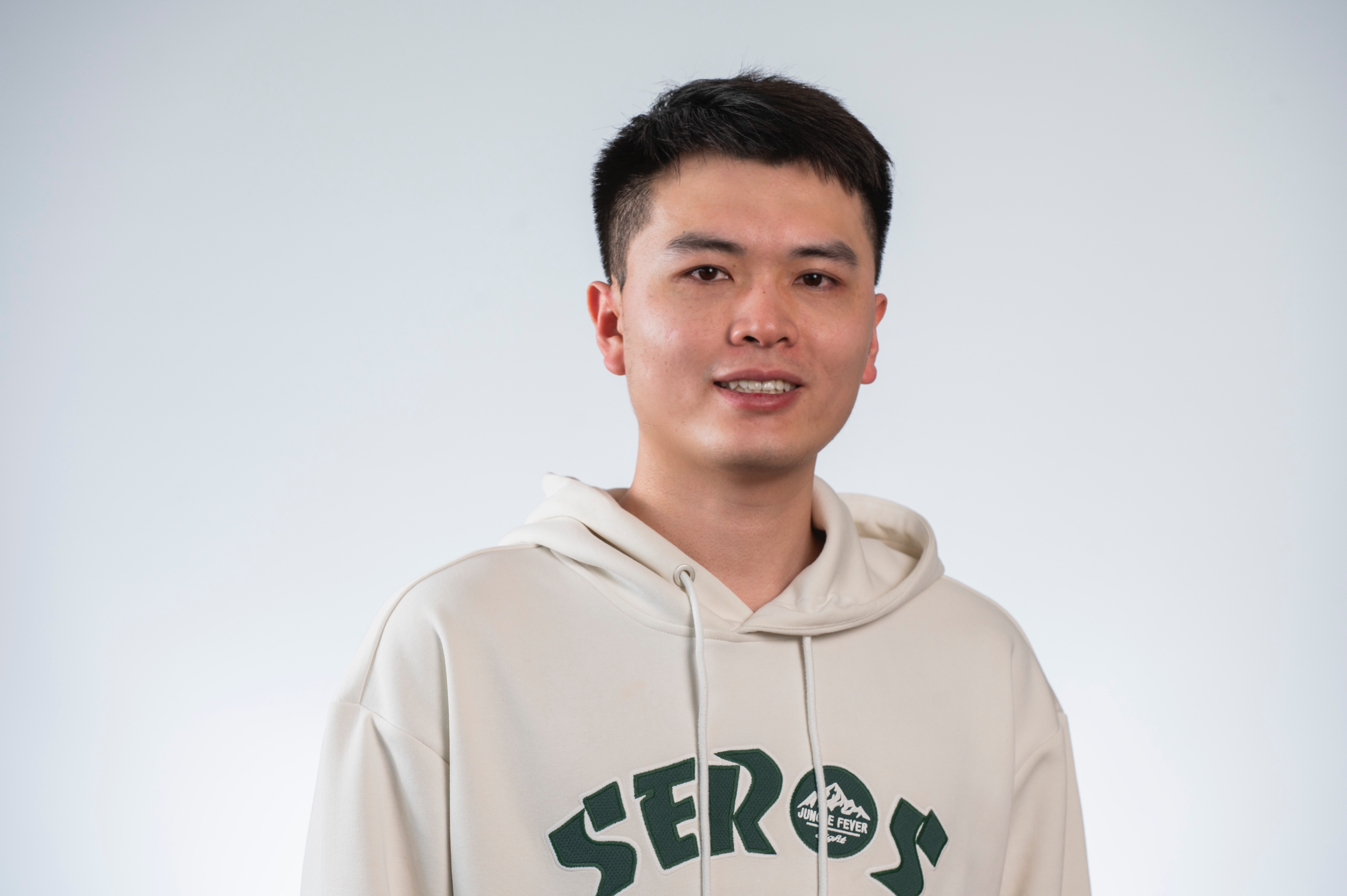
Dr Rui Zhang
-
Dr Rui Zhang
Contact info:
email: r.zhang[anti-spam](at)[remove]hw.ac.uk
Telephone: TBCRui is from Guangdong, China He participated in a 2+2 exchange program and was awarded dual degrees in 2018: a BSc in Optoelectronic Information Science and Engineering from South China University of Technology, and a BEng in Electronic Engineering from the University of Edinburgh. Building on his academic success, Rui went on to obtain his PhD degree from the University of Edinburgh in 2023. His research was centred on time‑resolved applications using CMOS SPAD.
In his research journey, Rui pioneered the use of a LiDAR system based on time‑of‑flight to profile water surface waves in a laboratory wave tank setting. He also significantly contributed to the development of fluorescence lifetime imaging techniques by integrating a CMOS SPAD line sensor for advanced retinal imaging applications. Today, he works as a Postdoctoral Research Associate with the Single-Photon Group, where he delves into the realms of underwater single‑photon LiDAR measurements.
Outside of his professional life, Rui takes pleasure in badminton, photography, reading, and travelling.
-
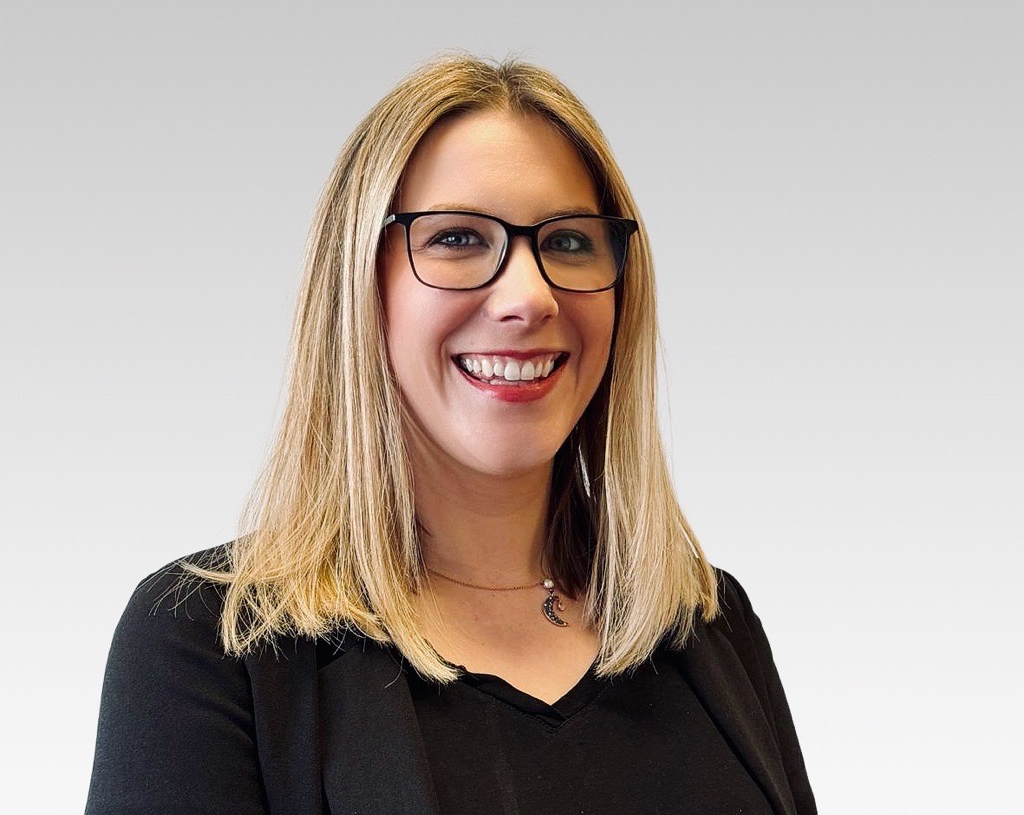
Dr Rachael Tobin
-
Dr Rachael Tobin
Contact info:
Rachael was born in Edinburgh, Scotland and grew up in Danderhall, Midlothian.
She moved to Arizona, USA and earned an Associate of Arts degree in Japanese Language in 2010. Following this, she undertook a BSc (Hons) in Physics at Heriot‑Watt University, graduating in June 2015.
In 2015, she joined the Single‑Photon Group at Heriot‑Watt University working on time‑of‑flight depth measurements in extreme environments under the supervision of Prof Gerald S. Buller. Rachael earned her PhD in 2019 and continued her research as a Postdoctoral Researcher.
Rachael is currently a Research Fellow funded by the Royal Academy of Engineering where she is investigating the potential for state-of-the-art single-photon detectors for rapid, high-resolution remote sensing at long-range and in extreme conditions.
In her free time Rachael enjoys playing flute, gaming, reading, running and cooking.